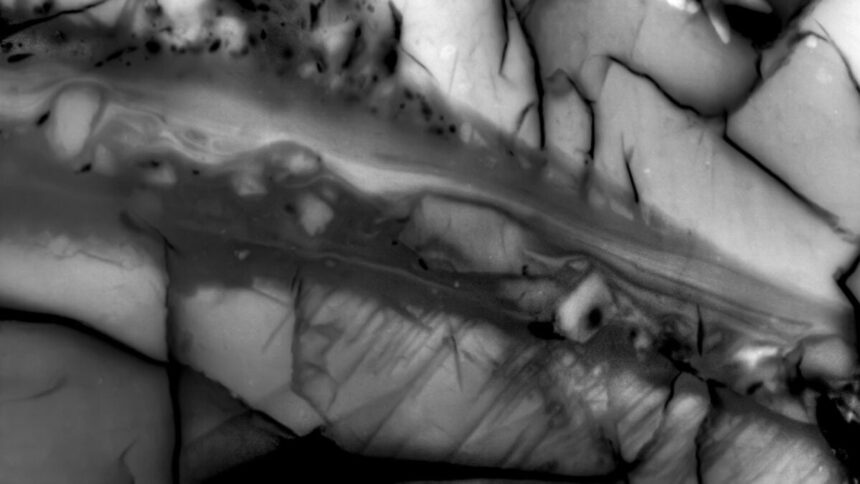Earthquakes can be deadly and disastrous. But what we feel may constitute a tiny sliver of an earthquake’s destructive energy, according to a new experiment.
In a recent AGU Advances paper, researchers describe how they created “lab quakes,” or miniature versions of natural earthquakes created in a controlled laboratory. Doing so allowed the team to derive a complete energy budget for the quakes, a “simplified analog” of real-life earthquakes, they reported in the paper.
Surprisingly, they found that only around 10% of a quake’s energy causes the physical shaking most people associate with earthquakes. Overall, anywhere between 68 and 98% of the energy goes into generating heat around a quake’s epicenter. Less than 1% of that energy is used to break up rock and create new surfaces.
“Our experiments offer an integrated approach that provides one of the most complete views of the physics of earthquake-like ruptures in rocks to date,” Matěj Peč, study co-author and a geophysicist at MIT, told MIT News. “This will provide clues on how to improve our current earthquake models and natural hazard mitigation.”
An artificial disaster
For the experiment, the team used granite samples to mimic the seismogenic layer, a section of the Earth’s crust where earthquakes typically originate. The goal was to simulate the microphysical processes during an earthquake that push rocky layers to slip along a fault zone, according to the paper.
They ground up the granite into a fine powder and mixed it with magnetic particles, with the particles serving as a temperature marker for the researchers. Then, they placed the sample under steadily increasing pressure conditions that replicated natural, pre-earthquake conditions.
From the changes in miniature seismic layers’ physical properties, the researchers determined the energy dynamics of each lab quake. They also found that the energy budget changed according to a region’s deformation history, or “essentially what the rock remembers,” Daniel Ortega-Arroyo, the study’s lead author and a graduate student, explained to MIT News.
“That history affects a lot of the material properties in the rock, and it dictates to some degree how it is going to slip,” he added.
Scaling up to reality
The team believes that the physics of lab quakes closely mirror that of real earthquakes. Certainly, the real world is much more complicated, but the experiment sufficiently characterizes the core physical processes in play during seismic quakes, they claimed.
The findings demonstrate a viable way to bypass the “spatial and temporal limitations of our current seismological tools and geological observations,” the researchers said. At the very least, the study could help inform the creation of a physical model for earthquake dynamics or seismologists’ efforts to pick out regions most vulnerable to earthquakes.
“We could never reproduce the complexity of the Earth, so we have to isolate the physics of what is happening in these lab quakes,” Peč said. “We hope to understand these processes and try to extrapolate them to nature.”
Read the full article here












